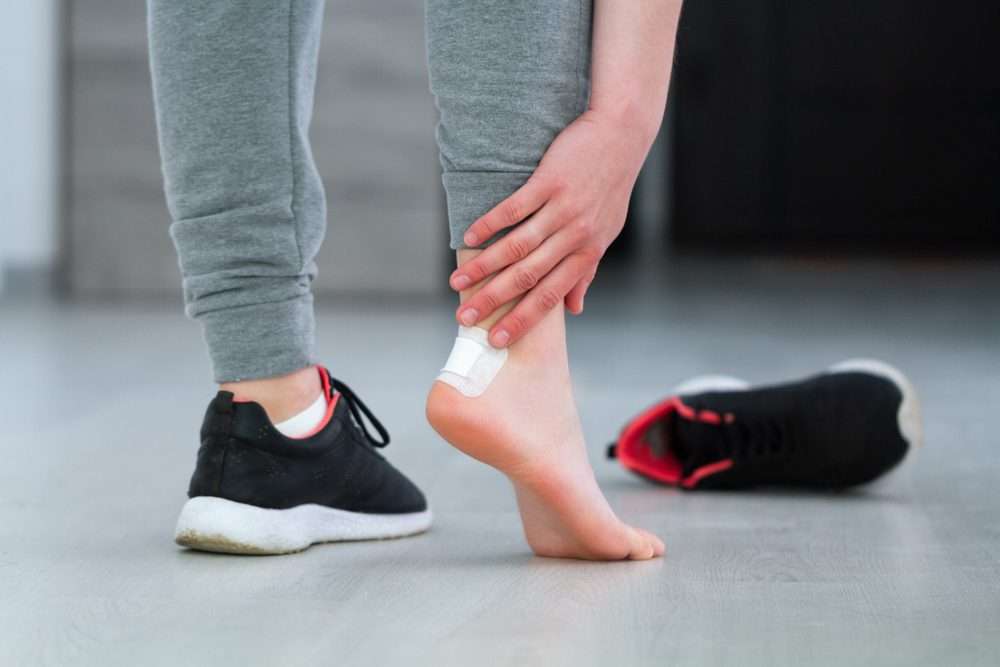Foot blisters are unwelcome, painful, soft bumps that form when the skin on your foot rubs against your shoe. You’re more susceptible to them if your sports shoes are too tight or if sweat doesn’t evaporate properly. However, don’t worry; it’s not inevitable. Today, we offer you three tips to prevent blister formation during your sports activities.
Pressure Points and Blisters: Strengthen Your Feet
Blisters tend to form mostly at the back of the heel and on the sole of the foot. In the latter case, the foot is imbalanced, creating pressure points. These overworked areas are the most vulnerable to blisters. To prevent this, you can strengthen the structure of your foot. Here are some simple daily exercises that can even be done with your family.
The first exercise strengthens the ankle and arch of the foot. While standing, gently rise onto the balls of your feet, then lower your heels back to the ground in a controlled motion. Once your heel lightly touches the ground, rise back onto your tiptoes. Repeat this movement about ten times and increase the number as you gain strength.
The second exercise helps strengthen the toes. Sit on a chair and place a towel on the floor in front of your feet. It should be far enough away that you need to stretch your leg to reach it. Using your toes, try to grip the edge of the towel and pull it toward you. Alternate between your right and left foot several times.
You can finish this session by massaging your arches to ensure that the fascia is relaxed and flexible. This will also help prevent inflammation of the plantar fascia.”
Prevent Blisters: Choose Breathable Fabrics
Wet feet are not only uncomfortable but also a contributing factor to blister formation. Moist skin is more prone to friction against socks and shoes, making it more susceptible to minor injuries. Additionally, the proliferation of bacteria, which thrives in warm and moist environments, creates an ideal setting for infected blisters. The good news is that there are solutions to reduce moisture in your shoes, even if you have hyperhidrosis.
The first solution is to choose your shoes carefully, ensuring that your feet have enough space and checking that the materials are breathable. Research which shoes are most suitable for your specific sport or activity. Next, pay attention to your socks. Synthetic fabrics are good at wicking away moisture. There are even specialized sports socks designed to protect your feet from friction while allowing them to breathe. If sweat is a problem for you, you can also consider using a drying spray on your feet, and you can consult your pharmacist for advice.
Opt for shoes that have already been worn rather than brand new ones.
New shoes and blisters: a well-known duo for most of us. While new shoes can give you a fresh boost of motivation in your sports activities, they are not ideal for a long workout session. New shoes, even those designed for sports, tend to be stiffer and more likely to cause foot injuries.
Therefore, it’s recommended to start by wearing them for short periods to break them in and mold them to your feet. You can wear them at home and then gradually introduce them for outdoor walks. Here’s a practical tip: be prepared and carry blister bandages with you during your first session; this will help minimize your discomfort. Thicker than regular bandages, they will protect your foot if needed and reduce pain.
If you already have a blister, here’s what you can do to treat it
If you already have a foot blister, begin by thoroughly washing your feet with soap and water, then pat them dry gently. If you don’t need to go out, let your feet air out. Never pop your blisters, as this can be painful and invites infection. You can disinfect them using an antibacterial cream and protect them with a bandage. Also, keep in mind that if you need assistance, your podiatrist offers foot care services in their clinic; don’t hesitate to contact them.

